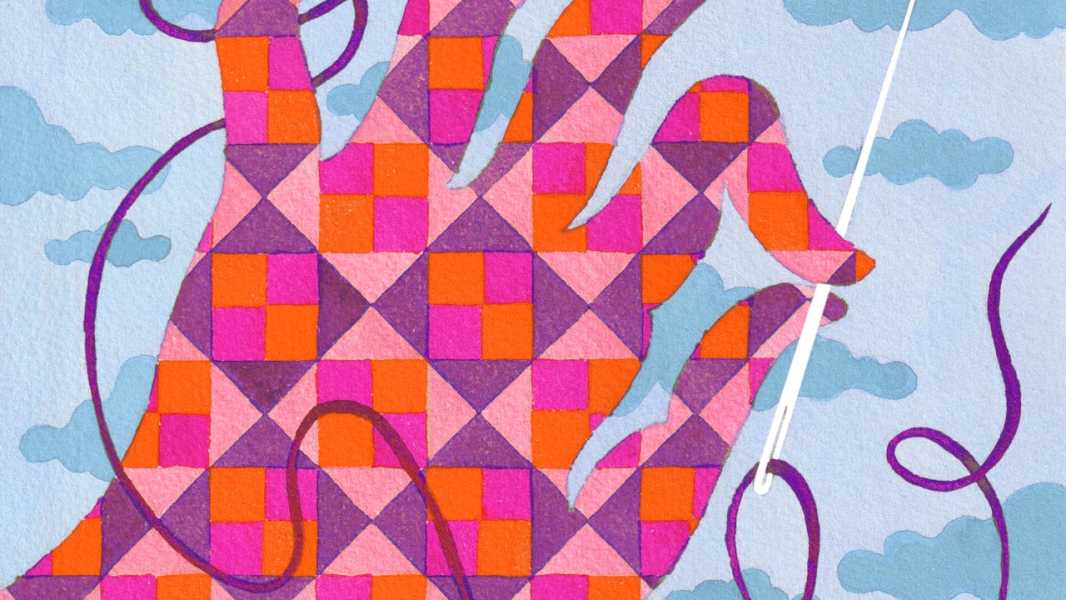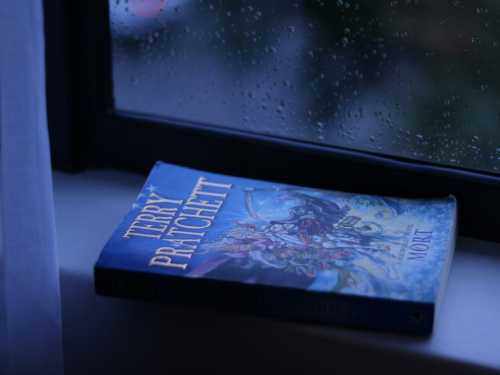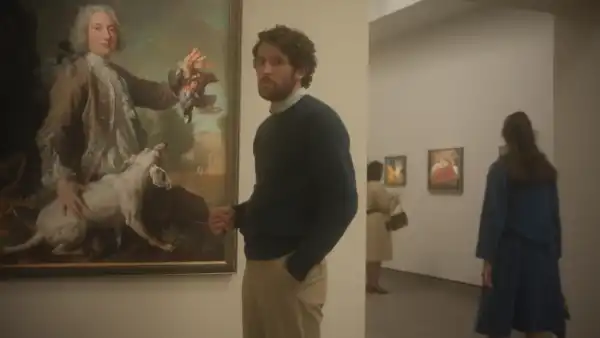
Save this storySave this storySave this storySave this story
Mark Darrell’s life began to unravel on a Tuesday morning in September, 2004, in Anbar Province. A marine staff sergeant, a steady, seventeen-year veteran with only a week to go in his Iraq rotation, Darrell left a staff meeting at a headquarters building in a Fallujah combat outpost, chuckling about the ribbing he had given his friend Major Kevin Shea. Shea hated the Yankees; Darrell was a diehard fan. Then Darrell felt a blast of searing heat and a concussive thump at his back, and he was thrown to the ground. Ears ringing, he scrambled to his feet, turned, and saw a heap of rubble where headquarters had stood only moments before. An enemy rocket had landed a direct hit. Darrell ran toward the bomb site, arriving just in time to see Shea’s body pulled from the wreckage. “I was just frozen,” he told me. “I wanted to cry, but I couldn’t cry.”
Darrell rotated home, got through the final three years of his service commitment, and retired. He took a job in law enforcement at the Federal Reserve Bank in Atlanta. Working security felt like a natural next step after the military, but he found dealing with civilian life—“dealing with civilians, period”—to be challenging. At work, he struggled to hold back swells of aggression. At home with his wife and children, he contained those moods by drinking. Night after night, he would pace the house, drink until he blacked out, hide in a closet, and howl. He drank to “numb the pain, numb the guilt, numb some of the nightmares,” but flashbacks to that morning in Anbar Province continued, along with waves of survivor’s guilt. The harder he tried to suppress them, the worse they got.
Finally, his wife issued an ultimatum: no more drinking. Darrell didn’t wait to hear the “or else.” He quit cold turkey and entered therapy at the V.A. But the nightmares and the all but unbearable distress continued.
Then, in 2016, as Darrell and his wife were expecting their first grandson, he was seized by a desire to make something for the baby, something that would come not from a store but from his life, his hands. “I don’t know why it was,” he told me. “I thought about a quilt.”
Darrell had never sewn, knew no one who quilted. But, he said, “I ran to Walmart, and I grabbed fabric. I grabbed sewing needles. I brought it all home, and I set it all out on the table, and I was, like, ‘Oh, yeah, I need a machine.’ I go to a pawnshop, and I just grabbed one. I remember that machine. It was just a little Singer, baby-blue and white.”
That night, hunched over his kid’s sewing machine, Darrell’s focus narrowed and, for the first time since he left Fallujah, the pain eased. He recalled, “I wasn’t thinking about the war. I wasn’t thinking about what the marines were doing. I was just thinking about, How do I make this thing square? I had never used drugs, but I could imagine someone’s first experience with drugs, with everything just firing at the same time. That’s what quilting did to me.”
I know that feeling. I recognize the way time folds and warps, lost in the crisp snick of the rotary cutter slicing through fabric, the buzz of the sewing machine, the hiss of the steam iron. It began for me on October 7th, when Hamas attacked Israel. I spent that day refreshing my news feed, my distress growing ever more intense. My late father was a founder of Kibbutz Kissufim, one of the kibbutzim invaded and destroyed by Hamas militants; my older siblings were born there. I’ve been involved for years in the fight for Palestinian rights and in the Israeli peace movement, many of whose members lived or grew up in the Gaza envelope. In the course of that day, I heard of more and more people whose loved ones had been killed or taken hostage. My Israeli friends and family were anguished, reeling. My Palestinian friends were terrified of the vengeance they knew was coming.
For two days, I did nothing but sit on the couch and stare at my laptop, growing increasingly distraught at the atrocities committed by Hamas and at the prospect of an Israeli invasion. Then, on October 9th, I noticed a sewing machine and a roll of fabric on my dining table. We were spending the winter in Maine, and I’d bought the machine, the cheapest for sale online, thinking that my daughter and I might find some cozy indoor project to do together. I closed a video of mutilated bodies strewn across the site of the Nova music festival, found my way to a YouTube video featuring a cheerful middle-aged lady named Jenny Doan, and did my best to follow her instructions on how to make a split-bars quilt.
Like Darrell, I was a novice at quilting. My only experience with a sewing machine was a week in seventh grade doing battle with a swath of ugly plaid fabric, trying to wrestle it into a shape that in the end almost passed—if I squinted and used enough safety pins—for a wraparound skirt. But, from the moment I picked up a rotary cutter, quilting took over my life. As Israel’s siege of Gaza intensified, I quilted from morning, when I’d carry my cup of tea over to the sewing machine, until night, when I’d grudgingly switch it off and go to bed. I would stop for dinner only because my husband pleaded with me to, but while we ate I would glance again and again toward the sewing machine until he would finally say, with bemusement, “Just go.”
When I stitched, my brain stopped whirring. My urge to scroll through videos of the attack ebbed. It wasn’t that quilting distracted me from the massacre or from the ongoing catastrophe in Gaza. I still watched news reports. I listened to audio coverage. I wept. But my rage and despair came at intervals, not unremittingly. I was able to tolerate and to a certain degree control the surges of horror, outrage, and fear—not to suppress them but, rather, to ride them like a surfer rides a swell.
Like so many women before me, I took over my son’s bedroom and turned it into a sewing room, complete with a better-quality sewing machine, a cutting table, an ironing station, and bins of fabric and notions, the delightful word for small sewing essentials and tools. I quilt every day, generally for at least four hours and often as long as eight, using it as a reward for finishing work and chores and as succor when I feel a wave of anxiety or distress. Walking into my sewing room brings me an immediate sense of ease, like slipping between the sheets of a freshly made bed.
Darrell and I are not alone in having turned to quilting in times of crisis. Quilters I’ve spoken to have come to the craft in the wake of the deaths of children, spouses, and parents; painful divorces from abusive husbands; childhood sexual abuse; psychotic breaks; brain-tumor diagnoses; and, like me, in response to the intolerable state of the world. Attempting to explain it, they all tend to say versions of the same thing: “I just had to sew,” or “I was going to start screaming out loud if I didn’t pick up a needle and thread.”
I reached out to Jenny Doan, the chipper online quilting instructor who started me on my own “quilting journey,” not understanding that to most quilters having a one-on-one Zoom call with Doan is like getting your nails done with Oprah. She is revered by legions of devoted fans, who inundate her with mail and mob her at events, testifying about having found her videos in moments of despair. “And here I thought I was teaching people how to sew,” she told me, laughing.
Doan herself began her professional quilting career at a time of crisis. Her husband, a hardworking machinist, earned enough to support their family of nine and save for retirement. But then came the 2008 financial crisis. His 401(k) was wiped out. They were, Doan laughed again (she is always laughing, except when she’s moved to tears), looking to avoid moving into their adult son’s basement. Her children pitched in and bought her a long-arm quilting machine, a huge, computerized unit that would allow her to finish other quilters’ projects for a fee, and—her kids hoped—keep a roof over their heads. Within a few years, Doan’s business, the Missouri Star Quilt Company, was the largest quilting-supply outfit in the U.S., worth hundreds of millions of dollars. Missouri Star owns seventeen buildings on the main street of Hamilton, Missouri, and employs three hundred of the seventeen hundred people who live there. She has done for a dying small town what she has done for so many of us: stitched it back together.
There is a person whose story stands out amid the many who credit Doan with saving them. One day she received a letter from a woman in Iran, asking for advice about how to teach the women in her village how to quilt. Doan recounts, “She ended her letter to me by saying, ‘You have filled my war-torn life with color.’ ” By now, Doan and I are both in tears.
Darrell says, of quilting, “Welcome to trauma treatment. Because it’s such a great tool for self-healing.” Why is this so? The answer, I’ve learned, is in large part neurological. Though we tend to describe the experiences of fear, anxiety, anger, and sadness as exclusively of the mind, they are intricately connected to the body, even in someone like me, who is so focussed on my thoughts and feelings that I might as well be a head floating in space. In the nineteen-thirties, Hans Selye, an Austrian-Canadian physician, identified the biological mechanism by which our bodies respond to stress. When we perceive danger, our hypothalamus triggers our adrenal glands to release stress hormones—a process that incites a cascade of physical reactions. Our hearts, for example, beat faster in anticipation of the blood flow we might need to respond to a physical threat. This is crucial if you’re about to be eaten by a sabre-toothed tiger, but, when you’re having a nightmare about your buddy’s death or sitting on your couch watching videos of bombs dropping five thousand miles away, it harms rather than helps.
In order to feel better, we must somehow get ourselves into a less reactive state. We try to do this in a myriad of ways, some more effective than others. Some, like Darrell, try to numb their pain with alcohol. Others tune out the world and play video games for hours. Others run until they pass out from exhaustion. And many of us, it turns out, quilt.
Quilting is a craft that requires the use of the brain and the body, that involves the senses of sight, touch, sound, and smell, that requires mathematical calculation, forward planning, and rapt attention. It begins with a pattern, or, in the case of what’s known as improv quilting, an idea, an emotion, or even just a whim. (“Today, I’m in the mood to make circles!”) Then there’s the fabric. You choose it not only by color but also by how it feels in your hand. For this pattern or idea should the fabric be slick, or should it be nubbly? Do I want to see and feel the warp and weft or am I going for a sleeker effect? Even the smell of the fabric comes into play: it has a mellow, warm aroma, especially under a hot iron.
Cutting up the fabric demands concentration. Measurements must be precise, and cuts clean. Each scrap of fabric—and there are usually hundreds of them—must then be ironed, matched, and pinned. Only then does a quilter sit down at the sewing machine. You sew two pieces together in a small block, and then small blocks together in larger blocks, each time returning to the iron to smooth the block and to the cutting table to trim it—piece after piece, block after block, for hour after hour, in an immersive and repetitive flow.
I was curious if something about these specific activities and sensory experiences might be particularly effective at soothing intense emotion. Absolutely, a number of experts in neuroscientists told me. Susan Magsamen, the founder and executive director of the International Arts + Mind Lab (IAM Lab), Center for Applied Neuroaesthetics, at Johns Hopkins University School of Medicine, explained that handwork has a stabilizing effect on the mind, which begins with the extraordinarily high density of nerve endings in our fingertips. Using our hands stimulates these neurons, triggering an immediate response in the brain—bathing it in oxytocin, dopamine, and serotonin, the hormones associated with pleasure.
Furthermore, each of our hands is controlled by the opposite brain hemisphere. Using both hands stimulates both hemispheres at once, and can also stimulate them alternately, as you shift from left to right. This kind of alternating bilateral stimulation is thought to be the basis for eye-movement-desensitization therapy, one of the more effective treatments for P.T.S.D. According to Daniel Levitin, a cognitive psychologist and neuroscientist and the author of the best-selling “This Is Your Brain on Music,” such activity also “strengthens connections between the hemispheres, facilitating creativity and the transfer of information over the long term, and helps to build up cognitive reserve.”
Quilting involves bilateral activity in other ways, as well. The parts of quilting that require intense focus, like cutting and matching seams, are controlled by something known as the central executive network, which is distributed in both hemispheres. I like to imagine it as a little gray-suited office drone, organizing all the cognitive tasks that require my close attention. Then, when I sit down at the sewing machine and start repetitively, all but robotically, piecing together cuts of fabric, he takes his coffee break. That’s when the default-mode network takes over. The default-mode network, which is also bilateral, is a brain system that is active when we are in a state of “wakeful rest”—when our minds wander. This state is profoundly restorative. Levitin told me that the default-mode network “effectively presses the Reset button in your brain.”
David J. Linden, a neuroscientist at Johns Hopkins University, described other ways in which handwork like quilting might help with mood. Self-directed creative activities that involve planning give a deep sense of agency and reward, which reduces anxiety and is correlated with well-being. And activities in which we can track our progress make us feel even better as we pursue them than ones in which all the rewards are deferred into the future. Linden compares the satisfaction of incremental progress to smoking cigarettes—the reward is instantaneous. And completing future-focussed activities, Linden said, is like doing heroin. The rewards are palpable, and they continue beyond the moment. When I joke that I have developed a “quilting addiction,” I might not be far off the mark.
All these neurological systems may explain why so many of us responded to the fear and constraints of the pandemic by becoming experts in sourdough fermentation, woodworking, or knitting. For a short while, I took up embroidery, which I enjoyed and found a certain comfort in, though I did not slip into the single-minded obsession that I have with quilting. We thought that we were all becoming hobbyists because we were stuck in our houses, climbing the walls. While this is true, it’s also likely that, faced with severe disruptions and fears of death, we were reaching instinctively for activities that made use of our hands, provided an achievable sense of mastery and control, and resulted in immediate rewards.
Quilting gives me a further source of delight: the pleasure of being part of a community, both virtually and in real life. Within half an hour of my house there are three quilting stores, all of them staffed by kindly women eager to provide advice, support, and praise. Such stores often have open quilting days, when people bring their sewing machines, rotary cutters, and irons and sit together sewing and gossiping, like women have done from time immemorial. I joined the renowned East Bay Heritage Quilters, one of at least four hundred quilting guilds in the U.S., which hosts virtual events, classes, and bimonthly open quilting gatherings at a local church. I have participated in online sewing circles, sitting with a group of people (mostly older women) hand-stitching a binding onto a quilt, and exclaiming over someone’s work in progress.
Piecing together a quilt for a practical use—for warmth rather than display—is called piecing for cover. It is an eloquent metaphor for the solace that quilting gives. There is no end of this wretched war in sight, and there is an election looming. If things go badly in November, I’ll probably want to quilt a shroud large enough to wrap half the country. I recently finished a quilt for a Palestinian peace activist whose resiliency and eloquence have allowed me hope amid all this turmoil and despair. I don’t delude myself that this gift will comfort her, but I comfort myself by imagining that I am piecing us together, wrapping and warming us both. ♦
Sourse: newyorker.com






